Content Creation
What Buyers Want from Brand Experiences
By Andrew Wheeler on May 6, 2022
Subscribe to our monthly newsletter, Content & Context, to receive more insights and updates on the content marketing world from Skyword CEO, Andrew C. Wheeler.
Do you ever feel like the marketing landscape is turning into a three-ring circus? Everyone's solution for "cutting through the noise" seems to be the same: get louder (also, bigger, bolder, [enter just about any other adjective here]).
In all the uproar, some brands have lost their way. Instead of treating marketing like a relationship with their audience, it's become a performance.
That's why I'm eager to share our latest research report.
Like a splash of cold water to the face, it reveals what consumers and business buyers want from brand experiences—and what turns them off. Their sentiments send a clear and timely message: Stop with the performance and start genuinely helping.
Customers want the information they need to make well-informed decisions about your products and services on their own terms, and at their own pace.
According to people who buy things, content sets the tone for their brand experiences. Misused, it chases buyers away. But, when deployed to help and better their experience, it quiets the noise, lets them focus on what's meaningful to them—and establishes a bond that's more than transactional.
So what does that mean for marketers?
Especially in times of economic uncertainty, when customers are more cautious and every marketing dollar counts, it's essential to have a brand experience that converts.
Based on the data and our observations, an effective brand experience has five variables:
CONTENT + (HELP x CREDIBILITY x RELEVANCE) / VELOCITY
Let's break down each one.
Content.
Customers depend on content to gather the information they need before they buy. This is especially true in a digital context, where content acts as a proxy for salespeople and the experience of handling products in-person.
But content doesn't just facilitate the purchase experience—it's a powerful determinant, too. Based on your content, customers make value judgments about your brand and products that have a real impact on their decision to buy.
For instance, a majority of buyers in both segments say the quality and authority of a brand's content has significantly influenced whether or not they purchased from them.
Nearly half of consumers have been influenced by the look and feel of a brand's content. More business buyers, on the other hand, have been influenced by content that was consistently tailored to them and brands that went above and beyond to give them advice.
With this in mind, make sure your content is sending the right signals about your brand and its priorities. Is it scattered in a few places to sell a certain product to a certain audience at a certain time? Or does it show that you're committed to your customers on an ongoing basis, that you're proficient in your market, and that you can be trusted?
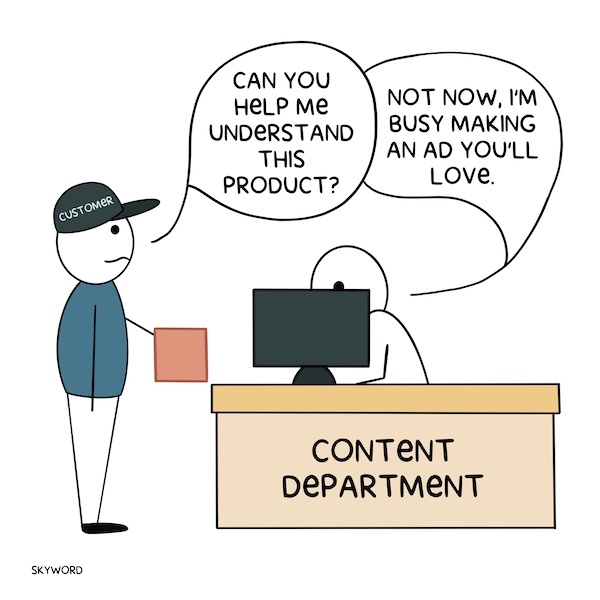
Help.
Across the board, buyers dislike tactics meant to influence their behavior. When they consume brand content, it's primarily as a means to an end. They want help answering a question, understanding how something works, or figuring out how to do something.
The brands that excel show up with the right help at the right time.
Keep in mind, help isn't just in the information you provide, it's also in the friction you remove. If you make navigating the research process easier, help buyers find an answer faster, or provide relief in a moment of frustration—however small—it can have a cumulative impact on your ability to acquire customers.
Our buyers aren't falling through a funnel, so why hinge your content strategy on that model? Instead, try to map out all the macro and micro "helping moments" that you can trigger along your buyer's journey. I guarantee you'll think of more useful and creative activations that are more attuned to your customers.
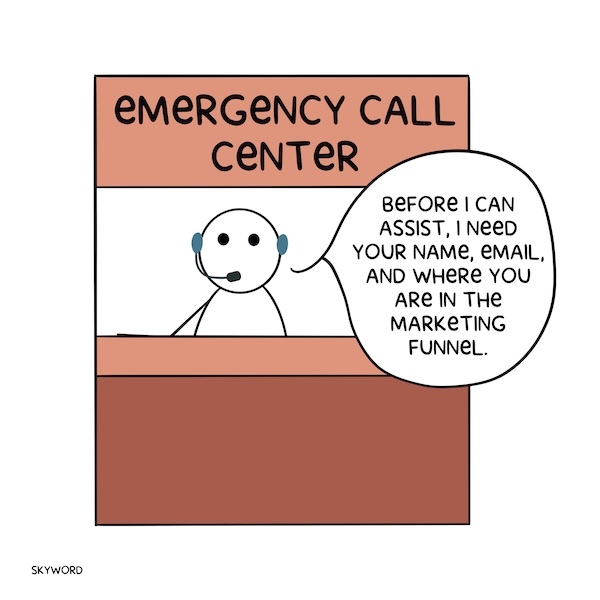
Credibility.
Generally, buyers are suspicious of brands. So, as they research, they look for signs of credibility.
Consumers, in particular, give more credence to brands that feel authentic—when brand videos and images are more realistic or when they see people like themselves featured or contributing content.
Business buyers look for background information—for example, a brand's accolades and industry track record—and content that shows they have legitimate expertise.
After being overexposed to pushy marketing tactics, buyers see content that's actionable, direct, and authentic as a refreshing differentiator. Rather than talking about yourself, involve micro-influencers—customers, external practitioners, and internal experts—in your storytelling. Their passion, authority, and authenticity will all lend more credibility to your brand.
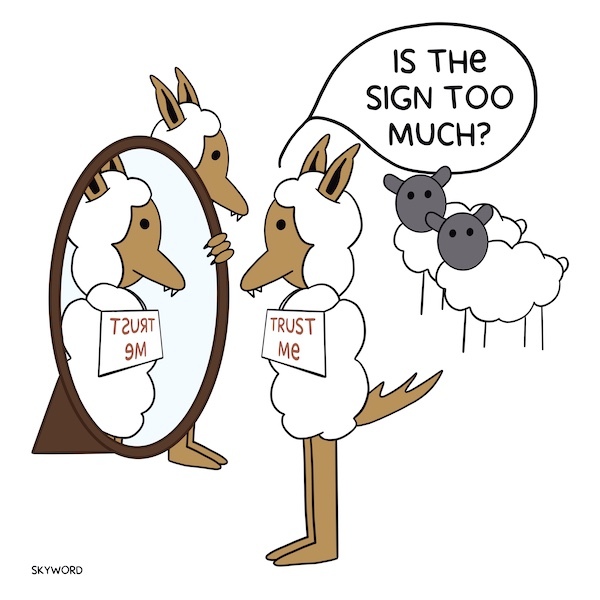
Relevance.
While spending more time than ever online, buyers have become used to operating in algorithmic bubbles that are highly curated to their interests. As a result, they have strong negative reactions to content that lacks specificity or isn't clearly relevant to their needs.
Among the top challenges shared by both consumers and business buyers is sifting through content to find the product(s) a brand offers that are relevant to them. Their most common frustration is brands pushing irrelevant offers or information their way.
Consumers gauge relevance at the individual level. They want to see information aligned to their interests, demographics, or preferences.
Business buyers gauge relevance at the business/role level. They want to see information aligned to their industry, budget, or business model.
Packaging content to align to these characteristics will help you establish relevance early on, giving your brand a distinct advantage closer to point of purchase.
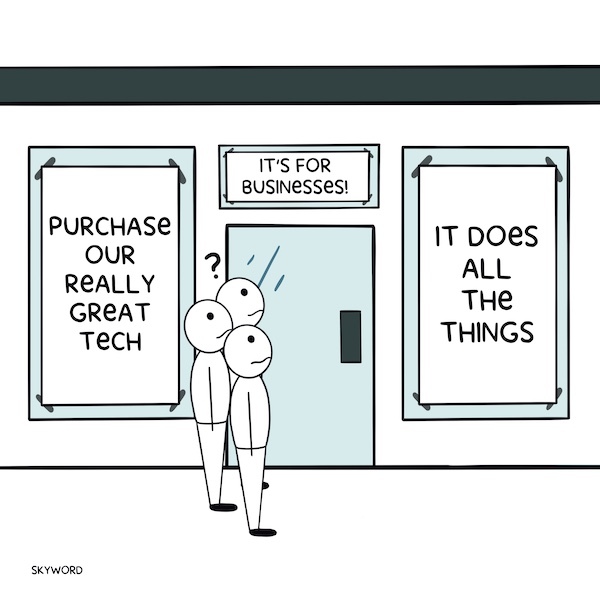
Velocity.
To make its mark and establish credibility, your brand's purpose and point of view should be constant; however, to remain relevant, you need velocity—the ability to ingest what's going on in culture or in the market and quickly respond based on how it intersects with your brand.
We use fast insights—like search intent, social listening, and real-time voice of the customer data—to help brands calibrate their day-to-day content to what their customers are thinking, doing, and reacting to in near-real time.
But the ability to act on those insights and get content into market quickly is a real sticky spot for most teams. That's why we champion a hybrid content creation model that includes freelance talent. This type of flexible resourcing gives your brand the ability to pivot and get new content created when and how you need it.
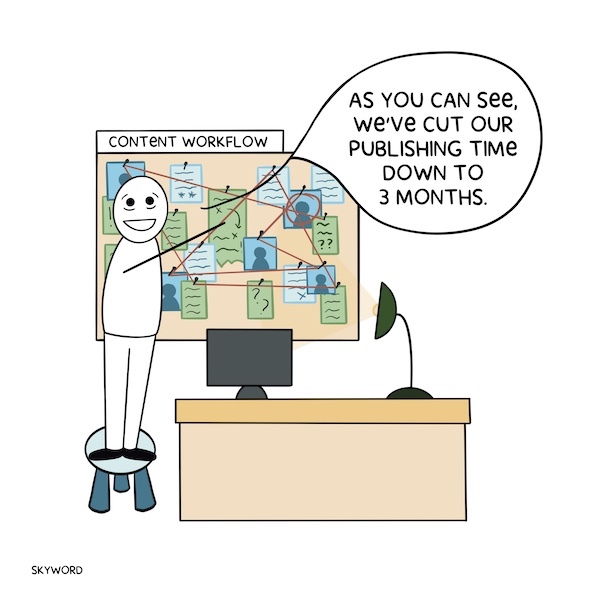
Post-pandemic, I think we've all lost patience for the static that steals attention away from what matters: spending time with friends and family, and doing what we love.
The brands winning now are turning down the volume and digging in. They're re-evaluating their customer experiences, focusing on value and quality, and re-centering their efforts on customers rather than cookies.
I hope that, in some way, our research helps with rethinking your own marketing and balancing the tactics you use to drive business with the needs of customers. As always, drop me a line and let me know what you think.
